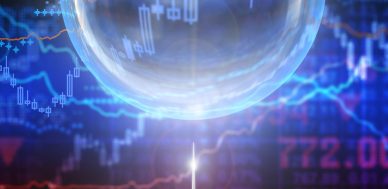A new chair of the U.S. Federal Reserve will begin his tenure on February 3. Jerome Powell will formally take over from Janet Yellen. Many expect him to follow his predecessor’s path. Yellen might be relieved to pass on her duties to someone else. In fact, far from a straightforward transfer of leadership and holding the ship on course, Powell may or may not have realized the ship he now commands is the Titanic.
The U.S. stock market is celebrating grandiose results. It’s at a record high amid a series of comforting statistics that, supposedly, show the U.S. economy is bursting with health. Yet, what the figures mask is that the economy is delicate. Alter a few parameters and you risk collapse.
Alan Greenspan Tried to Be Reassuring, But…
In the years when the sub-prime bubble was gathering steam, Former Fed Alan Greenspan tried to reassure investors, implying that it would be impossible for the markets to experience another major financial crisis. Yet, many now blame him for having been too permissive with interest rates. He encouraged the inflation of market bubbles and failed to expect—let alone predict—the implosion of the biggest one in recent history.
Indeed, Greenspan famously expressed “shocked disbelief” when lending institutions showed that it was not a matter of self-interest to protect their shareholders’ equity. (Source: Greenspan Concedes Error on Regulation, The New York Times, October 23, 2008.)
Alan Greenspan Warns That Two Bubbles Could Burst in 2018
To his credit, Greenspan has proved capable of reconsidering long-held beliefs and assumptions. Now, Greenspan is not only expecting a bubble, he is predicting the current one will implode. Indeed, Greenspan fears two bubbles: one involves equities and the other bonds. But, he says, the bonds bubble is the one that’s most troubling. (Source: “Alan Greenspan says there are two bubbles, in stocks and bonds,” MarketWatch, February 1, 2018.)
The bonds market could implode at any moment because there is a risk of runaway inflation. There’s even a risk of the dreaded stagflation. Essentially, the economic picture Greenspan is painting is one of an economy that will be plagued by negligible economic growth and high inflation.
What does inflation mean? Higher prices. This should quickly reverse the bullish consumer confidence trend about which President Trump boasted in his State of the Union address. Indeed, stagflation’s most disruptive symptom is a high unemployment rate.
In order to prevent inflation from evolving into stagflation, Jerome Powell and his colleagues at the Federal Reserve will tighten monetary policy. Greenspan shares this view with none other than Ray Dalio, perhaps the most successful hedge fund manager today. Greenspan may not have seen the bubbles when he was running the Fed, but it’s never too late to start enjoying the experience.
Irrational Exuberance
There are no better teachers than experience. In fairness, Greenspan did warn about “irrational exuberance” in the markets in the mid-1990s. Greenspan, therefore, has the tools to notice that the market is following the patterns seen in 2000 and 2008. But, you don’t need a guru of Greenspan’s caliber to see that the sharp increase in equity values in 2017—especially since August and despite a hint of a correction—to see that investor confidence has thrown caution out the window long ago.
Jerome Powell, therefore, has inherited an over-confident market with hidden risks everywhere. It’s very much like the Titanic. It was supposed to be an unsinkable ship. All it took was one iceberg to send it to the depths of the Atlantic. The iceberg could come from the rising geopolitical risks.
The U.S. appears ready to sour relations with Russia and China, still trying to maintain a presence in Afghanistan, Iraq, and even Syria. North Korea appears ready to improve regional relations, but intent on keeping the hostility with the United States. The other iceberg that is no longer even trying to hide is the debt.
The Federal Reserve recently announced that it would keep the nominal rate at the current 1.5%. But, surely, investors can expect the next pinch by the end of March. As Greenspan himself has learned by now, low interest rates fuel market bubbles. Trump’s tax cuts pose the risk that the federal debt will increase much faster than before. But, higher interest rates will also raise the cost of servicing that debt.
Meanwhile, Trump would like to launch a $1.5-trillion infrastructure plan. It’s long overdue, but, perhaps, launching it in the context of the biggest tax cuts in a generation may not be the wisest way to start. This time, Greenspan may be right.
